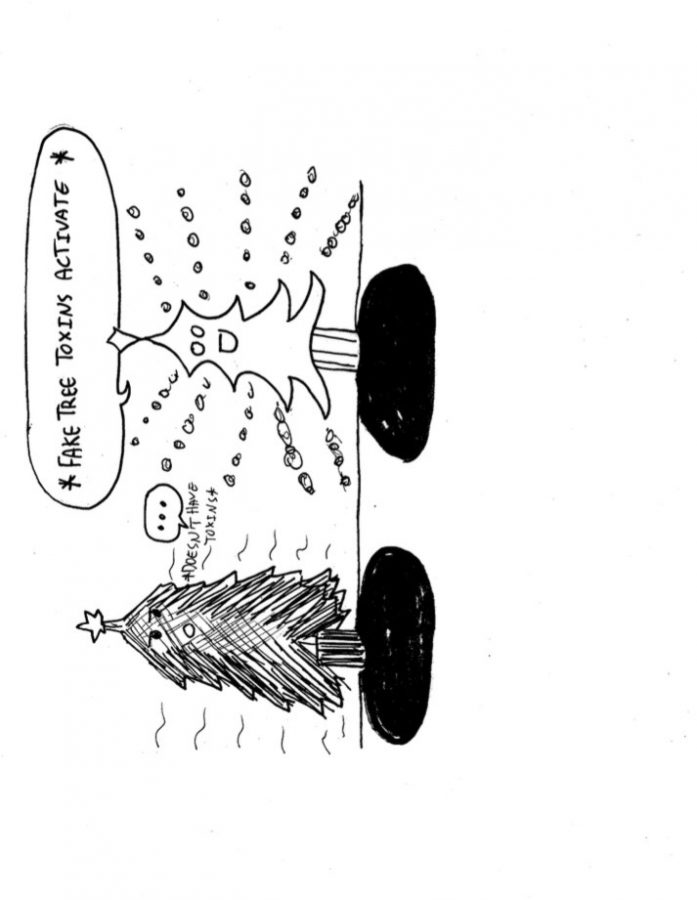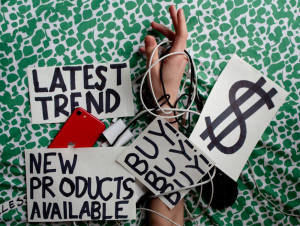Sustainable Cheer – Finding Eco-Friendly Options
December 20, 2018
As I set out to write this article, I felt like the Grinch: just another climate article bringing sad news and taking away holiday cheer. But fear not, for I found that holiday waste is much more within our control than other issues, and it can easily be tackled at the individual level!
For those of you who celebrate Christmas, the choice of real versus fake trees is an important decision you make each year, whether you realize it or not. The general consensus is that real trees are much more eco-friendly than fake ones, but this claim is based on a number of variables that are different depending on each family. Buying a real tree would definitely be better, but there are ways to make your fake tree eco-friendly too.
Fake trees are harmful because of their materials and the required transport. Most fake trees are made of polyvinyl chloride (PVC), a non-recyclable plastic that produces toxins which circulate in the environment and contribute significantly to the destruction of the ozone layer. In addition, most fake trees are produced in China and shipped across the ocean, which adds significantly to their carbon footprint. If you do go with a fake tree, it should be used for at least eight years to have a smaller footprint than any real tree, according to a study done by the American Christmas Tree Association.
Real trees are grown on farms like any other crop and are therefore not a factor in global deforestation. While the trees are growing, they still offer all the benefits of a normal tree such as cleaning the air by absorbing carbon. The closer your tree was grown to where you live, the less it has been trucked, which accounts for most of a Christmas tree’s impact. Additionally, real trees can be recycled after use. If you put your tree out on the curb within the first two weeks of January, Cambridge will recycle it into mulch.
Whatever tree you buy, get it from as local a source as possible; but, to be honest, if you are truly concerned about your environmental impact, you have much bigger issues to tackle than your Christmas tree.
Take holiday shopping and gifting, for example. Each year, the wrapping paper used between Black Friday and the New Year amounts to 50,000 trees, and shopping during this season produces 25% more waste than the average of the rest of the year.
And, of course, there’s all of the packaging our gifts come in, as well as the packaging we add ourselves. Of the 32 million tons of plastic produced annually in the United States, nearly half comes from packaging.
Any way you can avoid plastic packaging is good—whether it is by giving the gift of an experience, choosing a sustainably packaged gift, or making your own. Look for gifts packaged in paper or fabric as opposed to plastic, and when wrapping a gift, try using tissue paper or cloth instead of wrapping paper. After the holidays are over, save your wrapping paper/tissue/ribbons/etc. (if all is still intact) for next year. The holidays are a time to think about your impact by asking questions such as: Where does this come from? How was it made? For how long can I use this? Where will it end up?
The issue of holiday waste is simple, which is part of why it is so frustrating. Yet, this is an issue that can be changed through small steps and a simple increase in the mindfulness of our celebration. By no means is this article here to take away any of your family traditions, joys, or eccentricities. Instead, it is here to raise awareness in order to guide the CRLS community as it strives for a better future. Don’t lose hope, and have a lovely holiday season!
This piece also appears in our December 2018 print edition.










